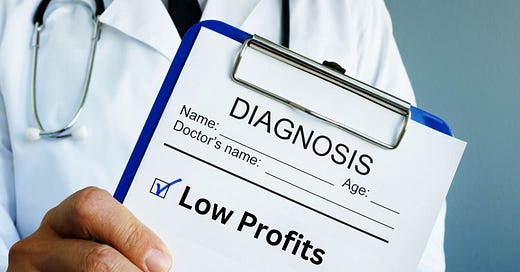How Do You Rethink the Way Diagnosis is Done?
You know a retreat should not start with a wild brainstorm, but why?
As a strategic thinker, you don't have to be convinced that the key to doing game-changing, pre-emptive strategic planning of a long-term nature relies on skillful diagnosis.
In fact, you have seen what happens when a retreat begins with wild brainstorming...a shallow, short-term focus which ends up merely chasing the day's hottest issues. It's Whack-a-Mole disguised as "strategic planning."
But how can you dramatically improve a team’s collective understanding of the organization’s current situation?
Seth Godin's new book "This is Strategy" offers a fresh approach to such diagnostic efforts.
Yesterday morning I picked up the book thinking I would get a gist of what it's about, then decide whether or not to share it. Around 12 hours later, when I was finished, I had a list of new personal tasks to undertake.
But I need to return to do a slow read...here's why. And why you shouldn’t binge-read this book the way I did.
Seth tackles a mighty subject - How to transform deep corporate systems. These are ones underlying every single human enterprise, that tend to keep things the same, which can only be addressed with a long-term strategy.
But he also covers external systems which lie outside the organization within government, society and the natural environment. In his world, a strategy must account for these hard structures also. Not shrink away.
As such, his book is a guide for radical strategic moves.
However, the "radical" ambition isn't realized merely because you want big stuff to happen. Instead, you earn it by appreciating how things already work.
Hence the need to read (and re-read) This Is Strategy.
There's just no way to comprehend all the perspectives he offers in a single read...or at least I couldn't!
As a subscriber to my list, you will find some to be familiar. Others will be new. And some you will struggle with.
For people in our line of work, consider each of the 298 short chapters to be a single trip to the gym to build your muscles.
By the end, I had the feeling that I had rushed through my workout. I advise you to take a more reasonable pace, to allow room for some meditation. Maybe at the rate of a chapter a day.
You'll be stronger for it.
Deep Diagnosis w/ Ai - How I’m Changing What I Do
Recently, I participated in deep dive diagnostic efforts inside two client organizations. One sits inside a tertiary institution, the other within a national government.
Based on my experience with LLMs like ChatGPT, I experimented with handing out “prompts” to groups of 5-8 in a workshop setting. This was the very opposite of what I used to do.
In the distant past, I used to be part of consulting teams. The best ones I ever joined were at McKinsey, where I was brought in as an outside expert.
The common approach such teams took would be to assemble a bright group of younger, energetic, motivated, elite-educated consultants. Together, we would work long and hard to define problems the client barely knew existed, in order to “solve” them in ways they would appreciate.
And thereby value our expensive services, which were sometimes set at eye-watering heights.
There was no way the client could duplicate such activity. They had neither the trained staff, nor the data, nor access to the background experts, nor the ability to convert ideas into discussion materials / decks, nor anyone willing to work until 2am in the morning on demand.
But times have changed. This gap, so profitably exploited by McKinsey and other firms, has shrunk. In fact, many clients have former consultants on staff.
They are usually still willing to work hard. But what has changed the most…is that they now have Ai tools.
This is what I brought to my two clients for the first time in intense diagnostic activities.
In a nutshell, I found that I could “prompt” them in a new way, offer them data developed and/or found by a LLM, and ask them to use their Ai of choice to perform rounds of mini-diagnoses.
I’ll share the results in a longer post - I promise - but as you may imagine, there are two benefits:
They don’t need to be sold on their own results. In the old model, selling a client on particular insights was seen by consultants as a partial payment on a million-dollar invoice.
Their analysis is better. We consultants are an arrogant bunch. We believe in our ability to see unique stuff. But we can’t ever see as much as an insider can. Or, to be more accurate, the insights a group of insiders armed with the right tools and data will always see the landscape better.
The above two benefits lead to better implementation. And success.
As you agree, this business of quality diagnosis is changing right before our eyes. Stay tuned for further content on this topic.





